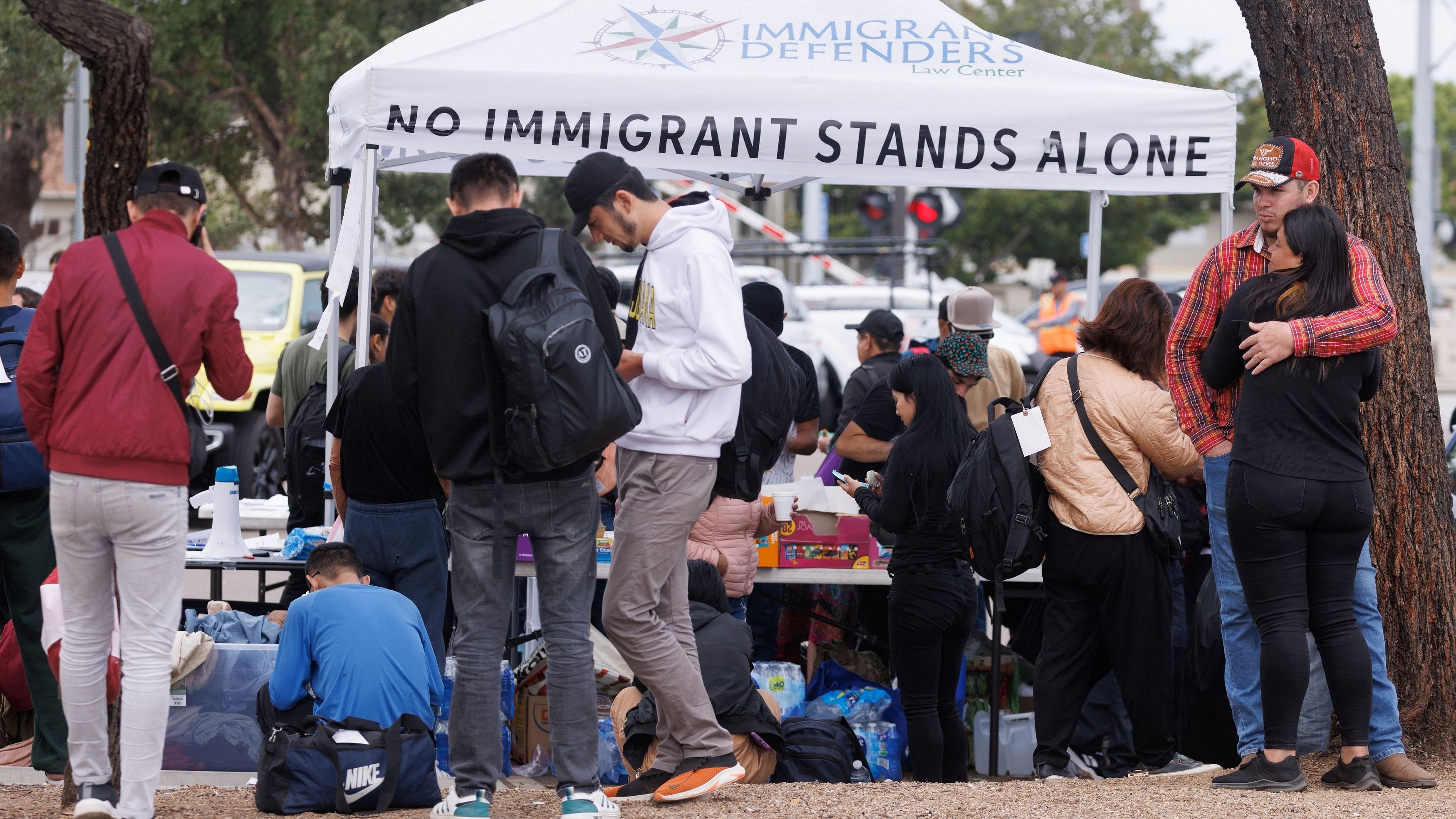
Migrants gather at primary border fences between Mexico and the United States.
Credit: Reuters Photo
Thousands of migrants crossed into the small city of Eagle Pass, Texas, from Mexico on Wednesday, crowding onto the banks of the Rio Grande and under an international bridge in what officials described as an unfolding crisis.
Mayor Rolando Salinas Jr. declared a state of emergency, seeking additional support to respond to an influx of migrants that reached 2,500 on Wednesday, overwhelming the city of 28,000 that has been a focal point of efforts by the state of Texas to deter illegal crossings.
The arrivals, including a large number of people from Venezuela, were part of a substantial increase in recent crossings along the southern border. The number of arrivals has reached levels not seen in months, taxing local governments in California, Arizona and Texas as large numbers of people claiming asylum have been released by Border Patrol agents directly into border communities.
That was the case in Eagle Pass, officials said, where the city’s lone shelter provider strained to accommodate the sudden arrival of so many people. Many were released onto the streets of the city.
“They are walking around the streets,” Salinas said in an interview, describing a situation similar to what the city experienced in 2021. “The hospital is getting swamped also.”
In El Paso, which has seen around 1,200 arrivals each day, officials have been scrambling to place migrants in shelters and also in local hotels.
Gov. Greg Abbott blamed the federal government for the arrival of large groups in Eagle Pass on September 20, saying Border Patrol agents cut razor wire that had been installed along the river by National Guard members operating under his direction. He said in a social media post that he had deployed additional guard members “to repel illegal crossings and install more razor wire.”
Salinas said it appeared that it was not federal officials but rather some of the migrants who were able to cut three sections of the concertina wire. “Once they cut it, it kind of opened the floodgates,” he said.
The crossings came after what had been several weeks during which a relatively small number of people had crossed.
Most of the migrants were being held temporarily under a bridge near a central city park that had served until recently as a staging ground for state police and National Guard members under Abbott’s border mission, known as Operation Lone Star.
The city recently ended its agreement with state police to allow arrests for trespassing in the park, although Salinas said he was thinking of declaring it private property again in order to resume those arrests. Part of Abbott’s border strategy has been to arrest migrants for criminal trespassing, a misdemeanor, as a means of deterring illegal crossings, though the approach has not appeared to have reduced the number of recent arrivals.
Eagle Pass has also been the setting of a legal confrontation between Texas and the Biden administration over Abbott’s deployment of a 1,000-yard floating barrier of buoys in the middle of the Rio Grande. The barrier has remained in place pending the court fight over its legality. It did not appear to have been a factor in the recent crossings.
Images of people huddled under a bridge in Eagle Pass recalled scenes in September 2021 when thousands of Haitian migrants crowded for days under a bridge in the city of Del Rio, Texas, a short drive north along the border. In that case, it took the Biden administration days to process the migrants or deport them.
On Sep 20, federal officials said that an additional 800 active-duty military personnel had been deployed to the border to help process the arrivals. And Alejandro Mayorkas, the homeland security secretary, said the federal government had extended temporary protective status for Venezuelan asylum-seekers, protecting those who arrived before the end of July from removal and allowing them to work.
Such an action had been called for by migrant advocates and officials in major cities such as New York who sought work authorization for the tens of thousands of Venezuelans who have arrived in recent months.
Mayorkas, in a statement, said the change would not apply to more recent arrivals, who, he said, would be “removed when they are found to not have a legal basis to stay.”
Two department officials spoke with reporters on the condition of anonymity during a hastily organized call late Wednesday. They said the administration also increased its holding capacity on the border to accommodate an additional 3,250 people, as border processing centers have reached capacity.
One of the officials attributed the spike in illegal crossings to continued instability in countries such as Venezuela with authoritarian governments.
The Biden administration introduced new border policies and legal pathways this year that were intended to drive down the number of people seeking to enter the United States. There was a sharp decline in crossings once all of those measures were in place after May 12, a lull that lasted about six weeks. Crossings began to increase again in July and have risen significantly in recent days.
Salinas said he felt he had no choice but to declare a state of emergency to again start receiving state resources that had pulled away during the decline in arrivals over the summer.
“We need the extra help, the funding,” he said. “We are losing. Every day the bridge is closed we are losing money,” he said, referring to the federal government’s announcement that it was closing one of the international crossings from Mexico, a major source of income for the city, to free up more resources to process migrants.
“They are coming in with no consequence,” he said of the migrants.